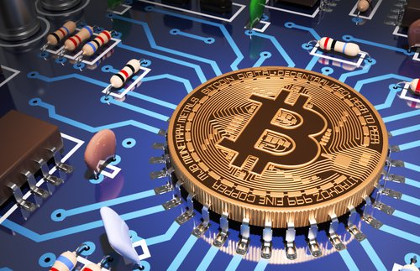
Five years ago on Jan 1, 2013, one Bitcoin was worth US$14.08 and on Dec 17, 2017 the price briefly passed US$20,000. A small investment of only $1408 for 100 coins was momentarily worth over $2 million just 5 years later. Bitcoin was the first of now over 1500 cryptocurrencies that exist today, but it still has the overall largest market value. From Wikipedia:

Bitcoin is a cryptocurrency and worldwide payment system. It is the first decentralized digital currency, as the system works without a central bank or single administrator. The network is peer-to-peer and transactions take place between users directly, without an intermediary.
The second coin by market value is Ethereum. It started 2017 at US$8.35 and peaked on January 13, 2018, at over US$1400. I bought some Ethereum coins at the end of May 2017 for a price of around US$200 and in June 2017 my son built a special computer for about US$1000 to "mine" the coins. He now has mined almost three coins. From Wikipedia:

Ethereum is an open-source, public, blockchain-based distributed computing platform featuring smart contract (scripting) functionality. It provides a decentralized Turing-complete virtual machine, the Ethereum Virtual Machine (EVM), which can execute scripts using an international network of public nodes.
The last crypto coin/platform I want to tell you about is EOS. It is currently in the ICO phase and the platform is expected to launch shortly after the ICO completes on June 1, 2018. I invested in the ICO earlier this month on April 10, 2018 at a price of US$6.00, which in hindsight was clearly divine timing, as starting on April 11 the price began shooting up and is currently over US$19.00. From Wikipedia:

EOS is a cryptocurrency token and blockchain that operates as a smart contract platform for the deployment of decentralized applications and decentralized autonomous corporations. EOS aims to become a decentralized operating system supporting industrial-scale applications, with claims to eliminate transaction fees and also conduct millions of transactions per second.
I know that many people don't understand what's so special about cryptocurrencies, so here's a great article on Medium that explains them beautifully. Essentially, a cryptocurrency token is an incentive, like when the company you work for gives you stock options. They are initially not worth anything, but if the company becomes successful they could be worth a lot, so you do your best to help make the company successful.

Bitcoin proved it’s possible to embed incentives in software so that the same level of coordination and efficiency is achieved without establishing legal entities, signing agreements, employment contracts etc. Bitcoin proved that economic coordination at the global scale that was previously extremely costly is now possible with pure software. This is the real breakthrough of Bitcoin, the creation of a Decentralised Autonomous Organisation (DAO).
Ethereum takes the idea of Bitcoin to the next level. It abstracts out the underlying platform so that you can focus on building other incentive structures. Ethereum does the same for DAOs. DAOs are not organisations as we normally imagine them (own stuff in the physical world, have employees etc). DAOs are pure economic coordination mechanisms. By distributing risks and rewards, DAOs can make people that never met each other contribute resources to the shared purpose.
Cryptographic tokens represent various risk/reward profiles and their holders create various incentive networks.
Web 1.0 — Static Document Networks : web of static pages connected via hyperlinks.
Web 2.0 — Social Networks : web of people connected via social links (likes, follows).
Web 3.0 — Incentive Networks: web of people connected via economic links (tokens).
In 2016, I wrote about The Singularity and a world where machines do all the work, but if we bring DAOs into the picture, then not only do they do all the work but also make all the money :-) From Forbes:

Terra0, a project involving an augmented self-owned forest proposed by Paul Seidler and Paul Kolling from the University of Arts, Berlin. In the project, forest land ownership is structured as an AI DAO with smart contracts on the Ethereum blockchain. Then, using drones and satellites, the AI DAO can evaluate the wood stock and decide how much and when to sell in the market. Once the project is up and running, the AI DAO can pay out debts to its initial owners and eventually turn a forest into the autonomous, self-owned entity that controls its own resources. Taking this idea further, we can imagine self-owned AV (autonomous vehicles) and robots becoming a normal part of our future economy.


No comments:
Post a Comment